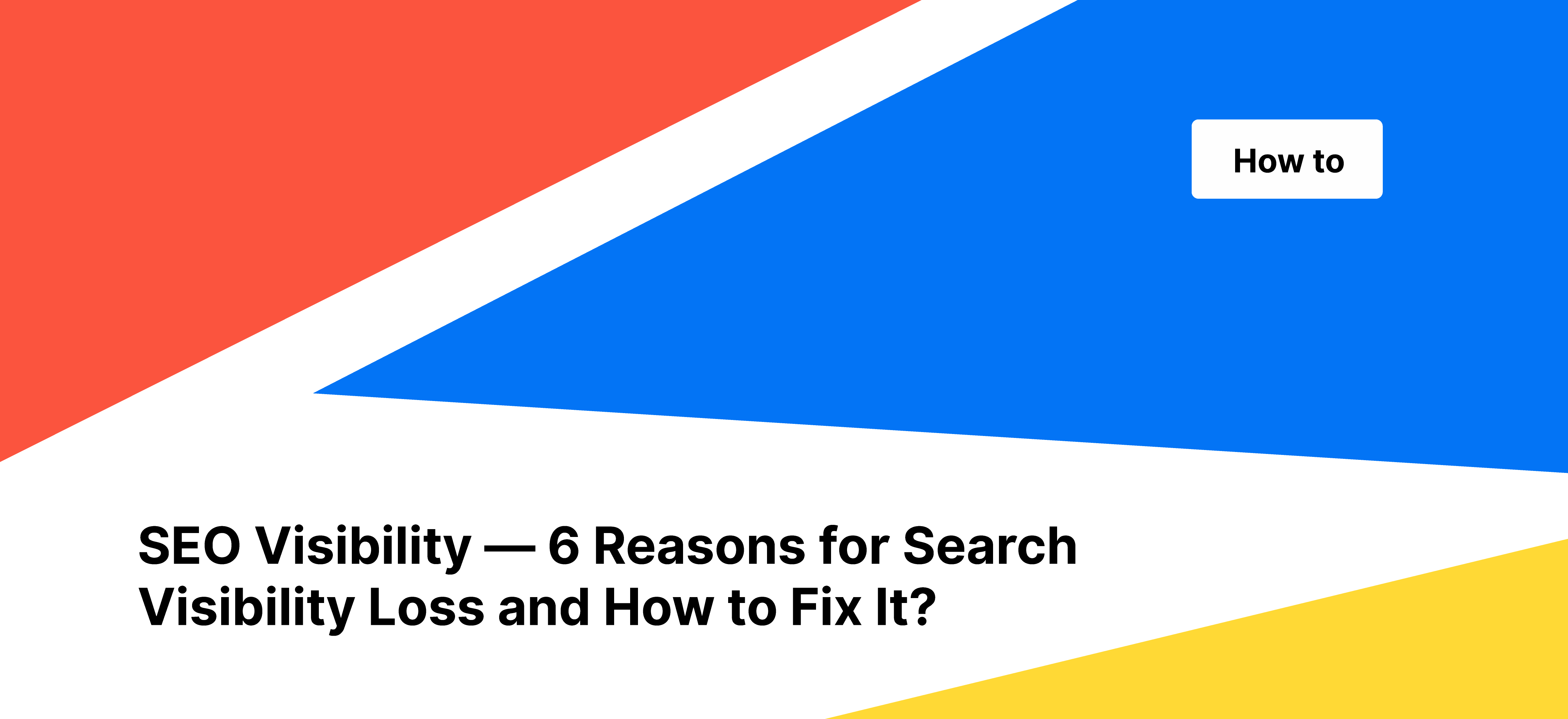
Organic SEO Visibility — 6 Reasons for Website Visibility Score Loss and How to Fix It?
A sudden drop in website traffic and lost keyword ranking could be your worst nightmare as a website owner or content marketer.
Fortunately, we can help you understand why your website could be losing online visibility and how you can fix these issues quickly.
You can prevent any further loss of rankings, conversions, and loss of sales by diagnosing the issue and applying some of the strategies outlined here.
What is SEO Visibility?
SEO visibility is expressed as a percentage of the total possible organic clicks from search results that a website is getting for a specific keyword.
Thus, your SEO visibility percentage depends on your position in search engine results pages (SERPs) relative to your competitors.
It can also be defined as a metric that represents your impression share in organic SERPs i.e. how many times a user saw your website in organic search results from the total number of searches for a keyword.
SEO visibility is not the same as SEO traffic.
SEO visibility is a relative value measured as a percentage of the total clicks received for a keyword, whereas SEO traffic is an absolute value measured as the total number of clicks received for a keyword.
Thus, your SEO visibility could remain the same even when your SEO traffic fluctuates.
A loss of SEO visibility affects SEO traffic, but the opposite is not true.
Why does SEO Visibility Matter?
An understanding of SEO visibility can help you in three ways:
- You can diagnose SEO issues promptly.
A loss of SEO visibility alerts you to potential causes like Google algorithm updates, Google penalties, technical problems, and so on.
- You get a high-level view of your site’s SEO health.
Raw SEO traffic data does not tell you how much more traffic you can expect, whereas SEO visibility tells you how much of the clicks pie you’re receiving.
- You can make faster comparisons between specific keywords.
By comparing SEO visibility metrics for two keywords, you can evaluate their performance and make an informed decision to focus on certain keywords.
How to Identify an SEO Visibility Loss
You may suspect that your website is facing an SEO visibility loss from clues like fewer signups for a SaaS product or noticeably lower eCommerce sales. However, you need proof that this is happening.
There are two indicators of declining SEO visibility:
Declining organic traffic
If you’re getting less organic traffic, your website’s ranking has likely decreased and consequently, your SEO visibility is low. This often happens after a major Google update that you were not prepared for.
You can evaluate the loss of organic search traffic using Google Analytics (GA). Your overall organic traffic will give you an idea of the seriousness of the situation.
You can check when organic traffic for a specific keyword began to decline–it will give you a hint as to what the cause could be.
Declining rankings
You can use three tools to check the performance of your search engine rankings: JetOctopus, Ahrefs, and Semrush.
- Using JetOctopus to identify lost search engine rankings
The first thing you should do when you identify a drop in traffic is to integrate your website’s GSC data into JetOctopus.
You will get a lot of insights with visual graphs which will help you identify the ranking and impression drops easily.
This will help you optimize site visibility and check your site’s indexing status. It also allows you to compare traffic for periods before and after the drop in search visibility.
JetOctopus is a handy tool that you should definitely integrate with your site.
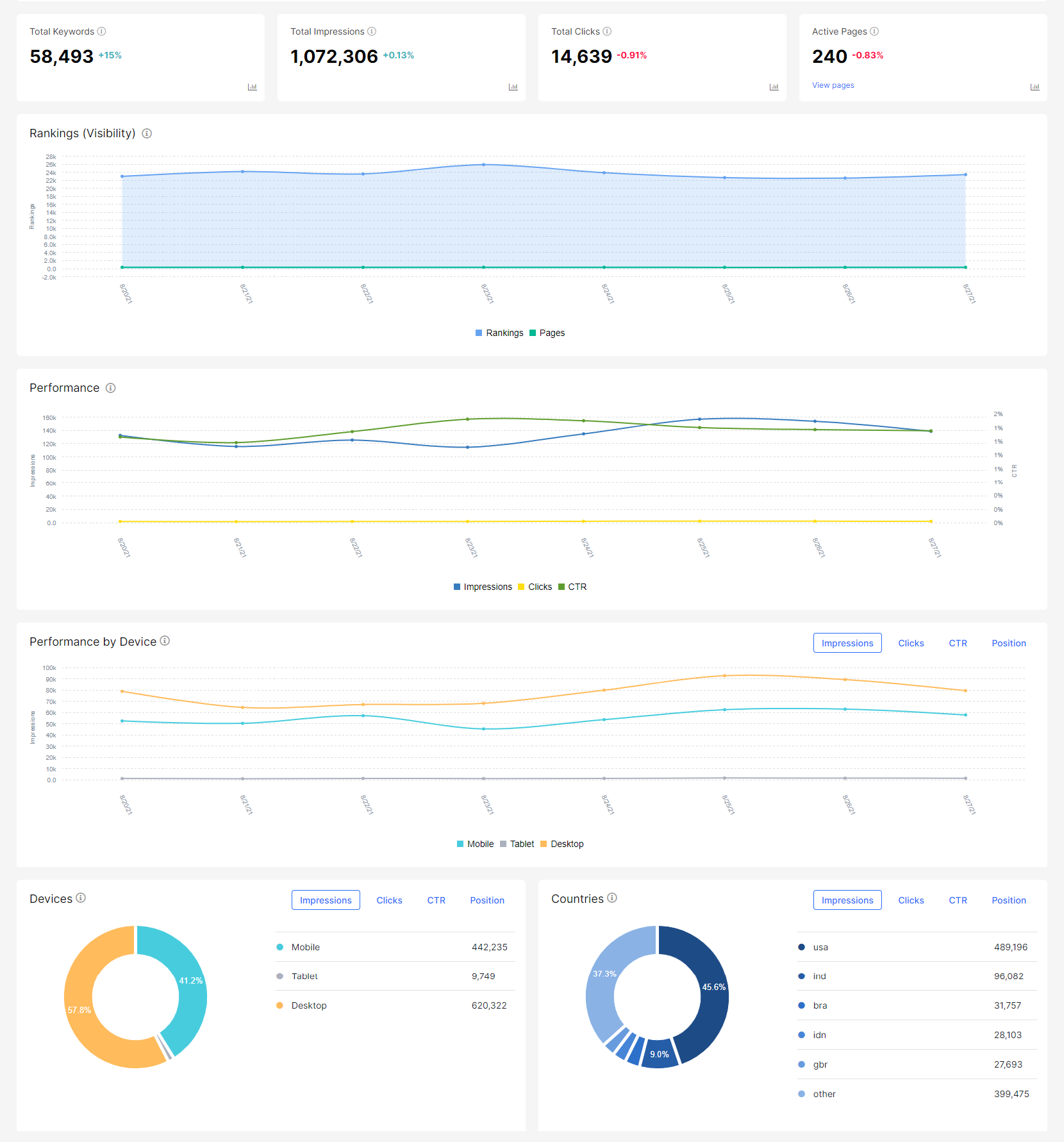
GSC Keywords Overview – JetOctopus
What can you find using the JetOctopus tool?
- Rankings and visibility changes of your site
- Performance data by device
- Country wise data of impressions, clicks, CTR and positions
- Device data of impressions, clicks, CTR and positions
- Manual actions taken against your site
- Keyword searches that make your site show up in SERPs
- Internal pages and external pages that link to your site
- When Googlebot accesses your site and its crawl rate
- And more
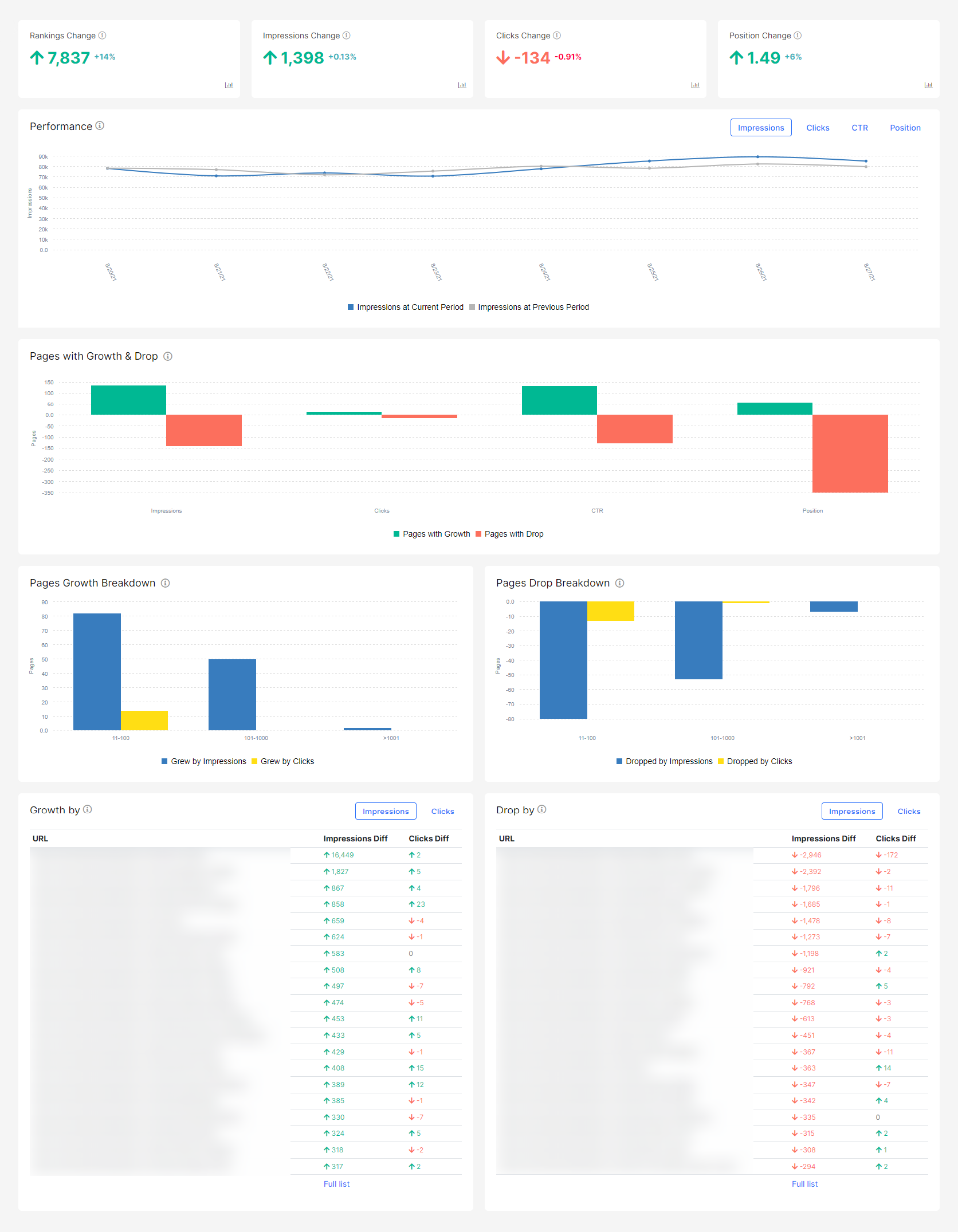
GSC Keywords Dynamics – JetOctopus
With this information, you can perform a basic diagnostic evaluation of your site to find out what has gone wrong. You may have made some changes to your site causing a drop in traffic or there could be an indexing issue.
- Using Semrush & Ahrefs to identify lost rankings
Ahrefs enables you to check the performance of specific keywords overtime on desktop and mobile with its Rank Tracker tool. You can access interactive graphs for individual keywords to monitor them.
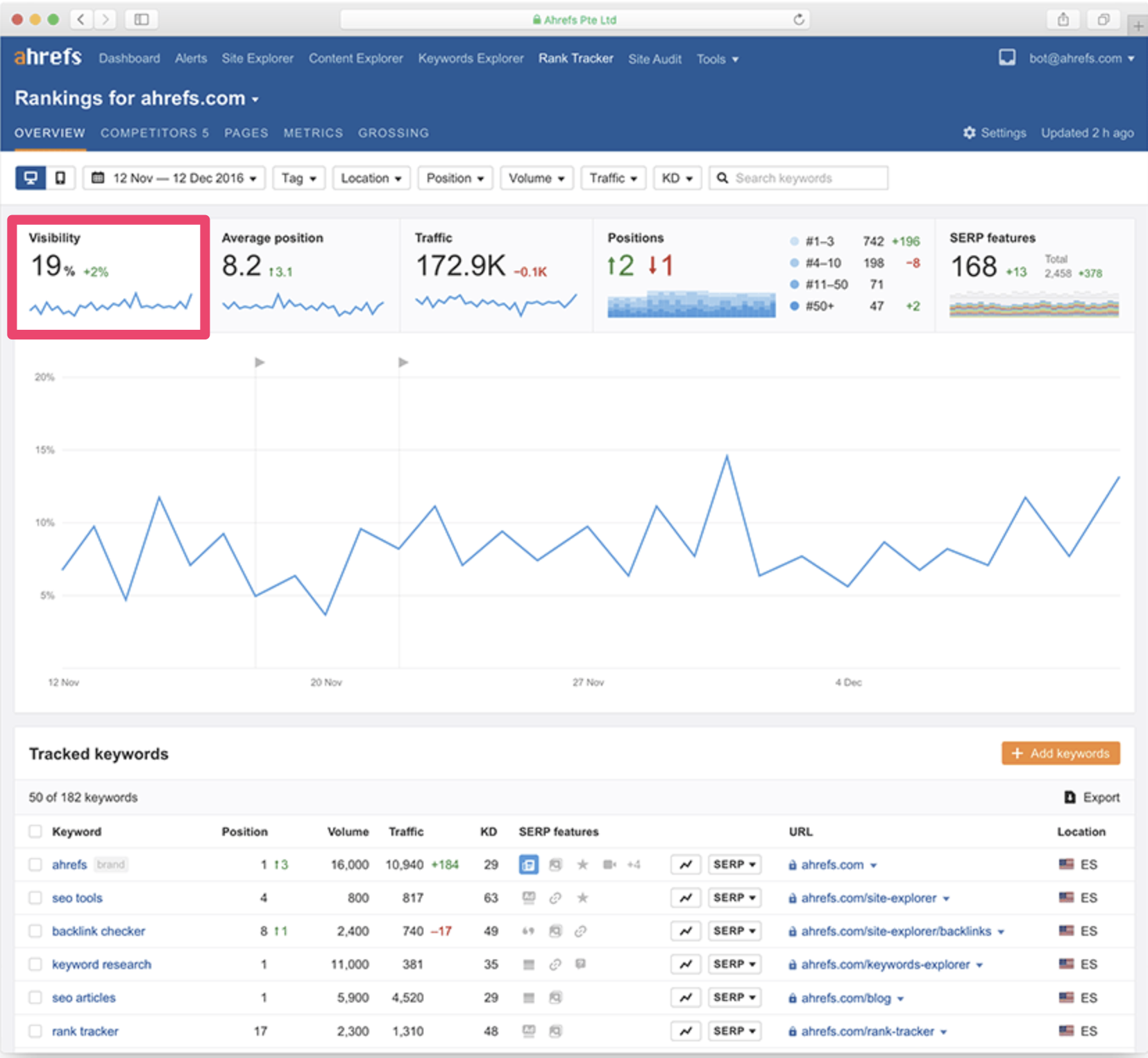
Source: Ahrefs
You can also use the Organic Search feature to check the recent changes in the ranking of your website. It will show you which keywords you’ve lost visibility on and by how much.
Semrush has an Overview tab where you can track paid or organic search performance to get an overview of your site’s SEO visibility. You can see charts for your domain’s visibility, average position for every keyword you’re tracking, and estimated traffic.
Semrush displays a metric called visibility %, which is based on click-through-rate (CTR), as the progress of a website through Google’s top 100 for keywords that are currently being tracked.
6 Common Reasons for Organic Search Visibility Loss
Once you know that you have lost rankings, the next step is to determine why it has happened. There could be several reasons for organic search visibility loss:
Algorithm updates
Google is reported to change its algorithms 500-600 times a year. But these changes are usually minor and do not cause a drop in online visibility. However, you need to watch out for the larger, core updates that occur once or twice a year.
E.g. The Title Tag update has caused missing publisher title tags for around 20% of search results, leading to a drop in traffic. Site traffic is also affected by badly rewritten titles with the wrong location in the search results because users will not click on them.
Also, Google considers EAT (expertise, authoritativeness, trustworthiness) to be most important for YMYL (your money, your life) sites that deal with health and finance.
The Title Tag update caused health-related titles to get mangled. E.g. The word “vaccination” is being added to titles of pages that talk about a disease but not about its vaccination.
You can follow @searchliasion on Twitter, an account managed by Danny Sullivan, to receive the latest information about Google’s core updates.
Technical glitches
Some of the common technical issues that can affect your SEO visibility are:
- Updates causing havoc
Major updates like Hummingbird and Panda have a massive impact on traffic and SERP rankings. Google rolls out such updates periodically to make SERPs more user-oriented.
- Site not being mobile-friendly
Google has turned on mobile-first indexing by default since 2019 for all new websites or those not previously known to it. The mobile version of web pages will be primarily used for Google indexing and ranking.

Source: Google Developers
Most people access Google’s search engine on mobile devices, thus Googlebot now indexes pages as a smartphone client.
Legacy websites should also apply best practices to make themselves mobile-friendly. If you don’t have a mobile-friendly website, your rankings are likely to slip.
- Server offline
If Googlebot tries to crawl your website while your server is down, it may cause a drop in your rankings. The longer and more frequently your server is down, the more likely it is that your search engine visibility will drop.
- Wrong “canonical” tag use
If you have internal duplication i.e. two URLs on your website show the same content, then Google does not know which URL to display to users, and the authority of each page gets divided. This leads to lower organic search visibility.
The issue is rectified using canonical links, which are tags used to add one of the URLs with duplicate content to Google’s index but not let the other show up in SERPs.
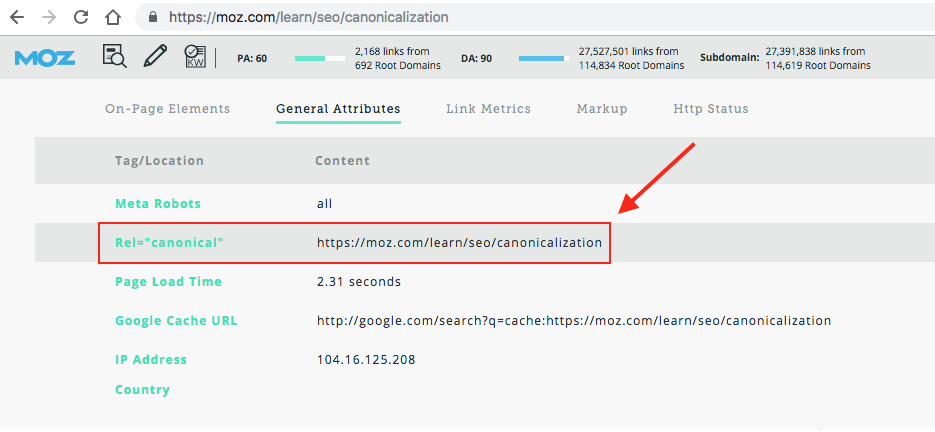
Source: Moz
If canonical tags are used incorrectly i.e you get confused between relative and absolute URLs, you could find your high-ranking page get replaced by a low authority page. Consequently, your keywords on the high-ranking page will face an SEO visibility loss.
The same issue is also seen with the incorrect use of hreflang tags.
- Unoptimized site redesign
Businesses often do not prioritize SEO when undertaking site redesigns. This can prove to be costly in terms of SEO visibility loss. Many issues can crop up due to site redesign issues:
- Robot.txt file issues making website uncrawlable
- 404 errors caused due to deleted pages
- Incorrect redirects
- Keyword cannibalization – more than one page optimized for the same keyword
Competition upping their game
Just as you’re working to improve your SEO, your competitors are implementing changes to boost their rankings, too.
What can you do about it?
a) Examine your competitors’ websites
Use a competition analysis tool like SimilarWeb to compare your website with that of a few of your major competitors. Check for any changes that your competitors have made in the period during which you have experienced SEO visibility loss.
b) Look at their past content
Use Wayback Machine or Versionista to check how your competitors’ content looked in the past. You can identify if they have fixed or improved past content, which is a reason for their improved SEO visibility.
c) Check if they built new links
Use backlink tools like Ahrefs or Majestic to see if your competitors have new links that have caused a shift in the competitor landscape. They could be running a fresh SEO campaign.
d) HTTPS vs HTTP
In 2014, Google announced HTTPS as a ranking signal in a bid to make the Internet more secure. Since then, it has been preferentially indexing HTTPS versions of pages over HTTP pages.
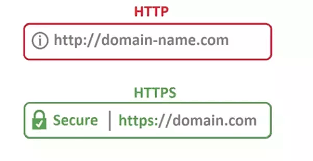
Source: Quora
This means that your competitor has obtained an SSL certificate to boost its search engine rankings. You should also invest in one to tell Google and your customers that your site is safe to use.
Hosting issues
Your hosting company could be facing technical issues causing your SEO visibility to drop.
Some of these issues are:
- Site not being indexed by Google
If the tag <meta name=“robots” content=“noindex”> gets added to the HEAD section of your HTML code, your site could get removed from Google’s search results.
- Errors in website/CMS migration
Website migration, CMS migration, or platform change could introduce errors in the code or change the redirection strategy unintentionally.
Site redesign and migration could introduce a variety of errors:
- Service interruptions
- Loss of content or metadata
- Broken links and images
- Failed redirect implementations
- Changes in information architecture
- Loss of internal links
Other hosting issues include servers getting hacked or moved.
Lost featured snippets
A Moz study found that opting out of Featured Snippets caused a 12% loss in traffic.
Featured Snippets are displayed above Google’s search results and get, on average, approximately 8.6% of all clicks. The first result below the Featured Snippet gets around 19.6% of all clicks.
When there’s no Featured Snippet, the first result gets ~ 26% of all clicks.
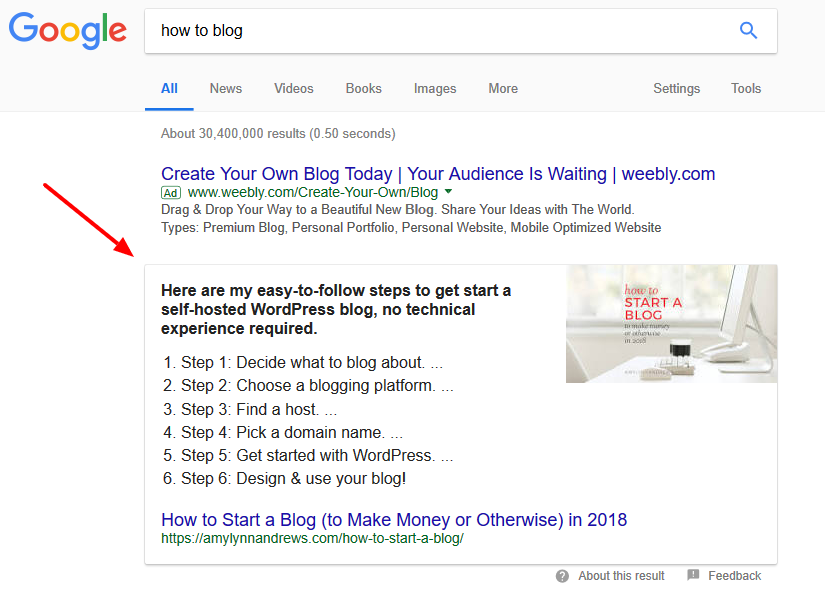
Source: Alexa Blog
Hence, even if you are ranking #1 but don’t get the Featured Snippet, your competitor could be stealing clicks from you.
Lost backlinks
Just like you check your competitors’ websites to see if they gained new links, you can use Majestic or Ahrefs to see if you have lost some backlinks.
If your site loses inbound links, Google thinks that you are not as much of an authority anymore and lowers your search rankings, which in turn, affects your traffic.
Link counting tools can tell you about a possible link decline:
- across the site.
- to a page or a group of pages.
- to a page that links to another page that is facing reduced traffic.
- in external pages that send inbound links to your site or specific pages.
8 Strategies to Fix Search Visibility Loss (and Increase More Search Visibility)
Now that you have diagnosed the possible causes for your SEO domain visibility loss, it is time to apply relevant strategies to remedy the problem.
Take a look at these 8 strategies to increase visibility:
Optimize Your Existing Content For More Keywords
- Optimize with your lost keyword ranking
Analyze your keyword data with GSC to find which are your most valuable keywords, which keywords are underperforming, and which keywords offer areas for improvement. Track lost impressions, clicks, positions, CTRs, and so on to find your lost SEO opportunities.
- Add LSI keywords, people also ask keywords, google suggested keywords
LSI (latent semantic indexing) keywords are search terms related to the core keyword you’re targeting that users look for. They add context to help users and search engines understand what your content is about.

Source: Wordstream
LSI keywords are not always synonyms of your core keyword but are closely related words or phrases.
e.g ., if your core keyword is “cake recipe,” your LSI keywords could be:
- Simple cake recipe
- Basic cake recipe
- Vanilla cake recipe
- Cake recipes for beginners
Your core keyword targets should also include:
- Related searches
- People also ask
- Google autocomplete suggestions
- Target long-tail keywords
Find long-tail keywords that have low competition and search traffic using tools like KWFinder. Create content using these keywords that is better than existing content.
- Add high volume keywords that pages are ranking on 5-20 positions
To find areas of improvement, focus on keywords that are ranking in positions 5-20 (bottom of page 1 or top of page 2 of Google’s search results). You are more likely to rank for these keywords on top of page 1 of search results.
Upgrade Your Content
Google aims to show the best results for any search query, so you should create high-quality content for your website.
- Add more content
Make your website the go-to resource for a particular topic by creating long-form, comprehensive pillar pages. These pages should have in-depth content that satisfies the user’s search intent. Other related pages on the website should link to the pillar pages.
Post fresh content regularly and frequently to encourage search engines to index pages on your site. You can create posts on industry-relevant topics or break down large topics into smaller posts.
- Increase dwell time (lower bounce rate)
Dwell time refers to the amount of time spent by a visitor on your page before returning to the SERP. You can increase the dwell time of your pages by:
- writing interesting introductions to hook readers
- dividing the content into subsections for easy scanning
- matching search intent/ being the most relevant answer to a search query
- creating in-depth content that is useful, entertaining, and offers a good user experience
- Enabling comments to encourage discussion and allow visitors to read other people’s comments
- Creating interactive content like quizzes, downloadable products, calculators, and polls
Your organic bounce rate tells you how many people left your website after viewing a single page. The lower your bounce rate, the better it is for your site.
- Add more engaging multimedia

Source: YouTube
Engaging visuals and infographics attract visitors and keep them on your website for longer. Infographics break down complex topics into easily consumable pieces and add a visual element for easier understanding.
Eye-catching videos also increase dwell time on your pages, especially product videos and customer testimonial videos.
Use attractive thumbnails to encourage visitors to click on the video.
- Update yearly dates in title and content
Rework old evergreen posts to improve CTRs and boost the overall ranking of your site. You can create new titles, update publication dates, or proofread your posts. These changes signal to the search engine that the content is fresh and its visibility should be boosted.
Optimize Your Meta Title & Description
A meta description is a short paragraph of text that appears below the title of a page in search results. It is around 150-160 characters long.

Meta descriptions may not have a direct bearing on ranking but they are meant to persuade users to click on the title. They should include your keywords and main points.
Thus, an optimized meta title and description improves organic CTR and boosts user engagement.
Add More Internal Links to the Page
Internal links connect one page of your website to another and have a positive impact on rankings. Use contextual links to connect related pages.
Define “donor” pages that will provide the internal link and “target” pages that these links will boost.
Be careful not to overload a page with internal links, especially if the post is short. There should be no more than 5-6 internal links for a short post.
Build More Backlinks to the Page
When you have identified what your competitors are doing to outrank you, implement these strategies to build more of your own links:
- Guest posting for high domain authority (DA) websites
- Influencer marketing campaigns to get backlinks from influencers in your industry
- Increased social marketing to earn more social shares and backlinks
Remember that not all backlinks are created equal. Google favors backlinks from trusted and authoritative domains. A good backlink strategy involves building relationships with leading websites and creating high-quality, useful content that people will want to link to.
Expand Your “SERP Real Estate”
You can increase your online visibility by using more of Google’s SERP features.
- Add outline for sitelinks
Site structure is an important element of SEO that helps your website rank higher on search results. A website outline helps search engines crawl your content more easily. They start with the home page and move to other links that they discover.
Thus, your main categories could be displayed in search results, increasing your CTR.
- Add rich snippets
Rich snippets or rich results are Google search results displayed with additional data. This data is pulled from Structured Markup (like Schema) located in the HTML of a page.

Types of rich snippets are events, recipes, and reviews.
They are more attractive than normal search results and thus lead to a higher CTR..
- Add people also ask keywords with frequently asked questions
Did you know that 43% of search queries now show people also ask (PAA) boxes?

Source: Ahrefs
You can find relevant keywords from PAA boxes and optimize your on-page content to increase the likelihood of Google picking up your page to display in the box.
Increase Your Domain Authority
Domain Authority (DA) is a metric developed by Moz and scored on a scale from 1 to 100.
The higher your DA is, the more likely it is for your website to rank higher and get better organic traffic. Thus, it’s a good way to measure your SEO efforts and compare your website with that of competitors.
To increase domain authority, you can take the following steps:
- Optimize on-page content.
- Create high-quality content that attracts links.
- Improve internal linking structure.
- Remove bad links and toxic links.
- Make your website mobile-friendly.
- Increase website authority in your niche with engaging content and guest blogging.
- Increase web page loading speed.
- Get more social shares by promoting your content on social media.
Do Periodic SEO Website Audit
An SEO audit is an evaluation of a website to check its ability to rank in SERP. Use an audit list to check for issues and repair or improve what is required every 3-6 months to optimize the performance of your site.
Some factors to focus on in an SEO audit:
- Boost technical SEO – page title, meta descriptions, canonical URLs
- Identify issues with a site crawl using JetOctopus
- Improve user experience (UX) – colors, images, videos, CTA above the fold, social proof
- Check DNS settings using GSC
Use JetOctopus to Analyse Your SEO Visibility Loss
To increase your site visibility, you must analyze the pages visited by search bots, pages in site structure, and pages getting impressions and then try to optimize these pages first. You can check your website’s SEO insights visually by integrating all three datasets in JetOctopus.
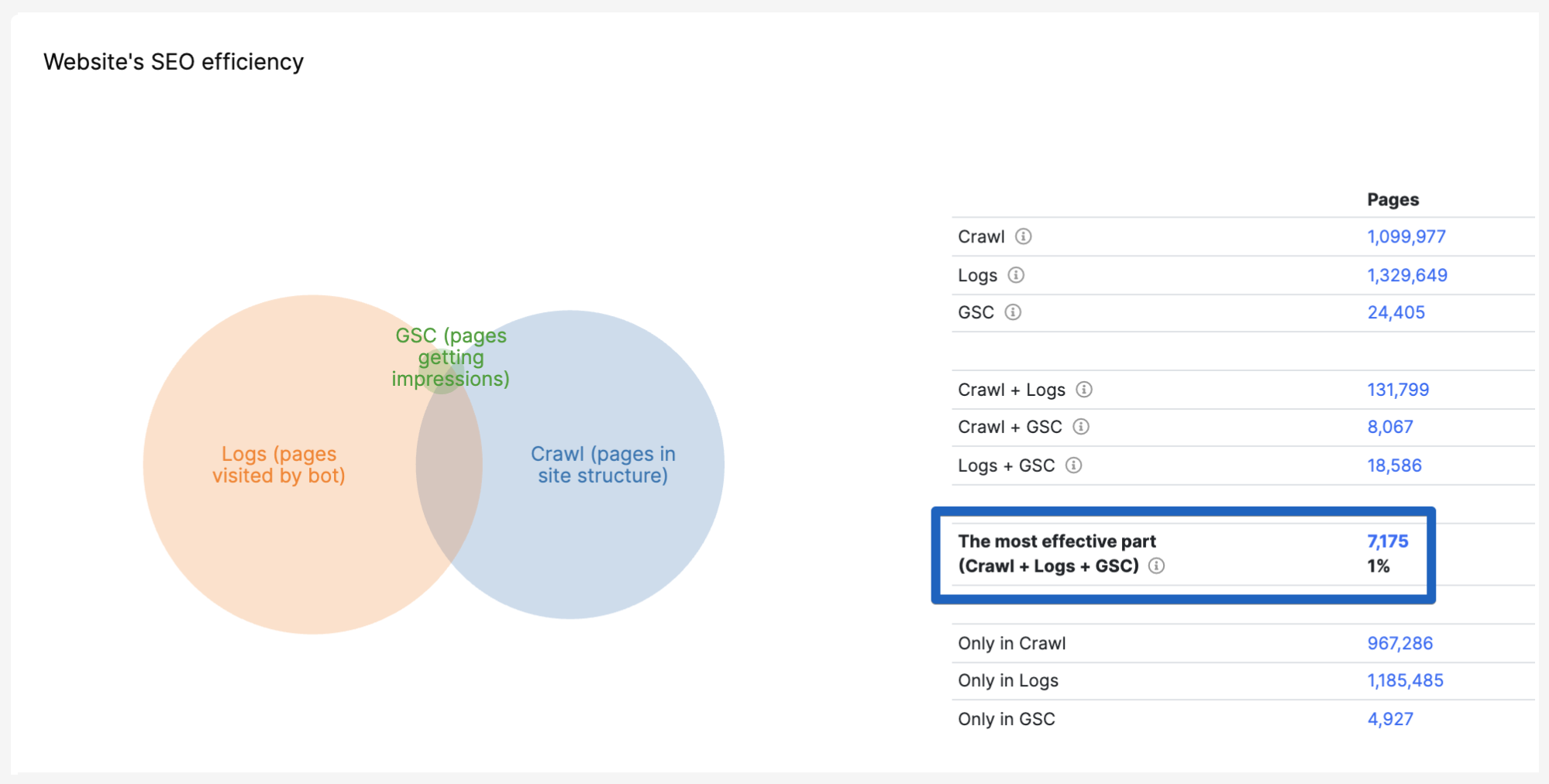
- Crawl – The pages that are in the site structure
- Logs – The pages that are visited by bots
- GSC – The pages that are in Google Search Console
- Crawl + Logs – The pages in site structure that are getting bot visits
- Crawl + GSC – The pages in site structure that are getting impressions
- Logs + GSC – The pages that get bot visits and impressions but are not in the site structure
- The most effective part (Crawl + Logs + GSC) – The pages that are in site structure, are visited by bots, and get impressions
- Only in Crawl – The pages that are only in crawl and aren’t getting bot visits or impressions
- Only in Logs – The pages that are only visited by bots and aren’t in site structure or getting any impressions
- Only in GSC – The pages that are only in GSC and aren’t in site structure or getting any bot visits
SEO Insights:
- Crawl budget waste – The orange circle that doesn’t overlap with the blue circle. These pages are visited by bots but are not in site structure. They are potentially wasting your crawl budget. You can remove those pages completely or add them to your site structure.
- Not visible part of your website – The blue circle that doesn’t overlap with the orange circle. These pages are visited by search bots but they aren’t in your site structure.
- The pages visited by bots but aren’t getting impressions – The intersecting sections between orange and blue circle show the pages that are visited by bots and are in site structure but aren’t getting impressions.
Check out our video with step-by-step instructions:
Conclusion
A sudden and inexplicable drop in traffic can be stressful and scary because it usually means fewer conversions and consequently, a loss of revenue. However, you can solve the issue by systematically going through the list of reasons for a decrease in organic search visibility, identifying the problem, and applying relevant strategies to fix it.
SEO Visibility: Frequently Asked Questions
- What is site visibility?
Site visibility is an indicator of how successfully you have optimized your website for search engines like Google. The higher up in the search engine rankings you feature, the more likely it is for you to get greater organic traffic via click-throughs.
The more traffic you get, the more your conversions or sales are likely to be. That’s why website owners are constantly attempting to optimize different keywords relevant to their site (and other elements) so that Google displays them more often to users.
- What is SEO Visibility?
SEO visibility is a relative value that measures, as a percentage, the number of clicks received by your website through search results from a pool of organic clicks.
SEO visibility is not the same as SEO traffic.
SEO visibility is expressed as a percentage, whereas SEO traffic is expressed as an absolute number.
- What is SEO and how can it help my website’s Google visibility?
Search Engine Optimization (SEO) is the process of optimizing or tweaking the contents and elements of a web page to help it rank higher on search engine results.
SEO helps drive organic traffic to a website, meaning you don’t have to pay for advertising.
75% of online searches start on Google. So if your website is displayed to users at the top of search results, it is more likely to receive clicks, conversions, and sales.
SEO has two core elements – on-page SEO and off-page SEO.
On-page SEO involves writing high-quality content, using relevant keywords, and incorporating keywords into metatags and titles.
Off-page SEO involves building relationships through useful content so that people link back to your website (backlinks), earning you more authority on that topic or in that industry.
- What is a visibility score?
A visibility score tells you the percentage of clicks received by your website from SERPs for a given keyword. It is a relative value that is dependent on your competitors’ rankings.
For instance, if your visibility score is 2% it means that your website is getting 2% of the total organic clicks from search results.
- What is a good SEO Visibility score?
An SEO visibility score of 35% is achieved when you rank #1 for a keyword. In other words, you can expect to get 35% of the total amount of clicks when you rank on the top spot for a keyword.
It is not possible to achieve an SEO visibility score of 100% because it is impossible to get 100% of all the available clicks. Your website cannot own all the organic slots for a given keyword and all the clickable SERP features such as Featured Snippets and Related Questions.
- What are visibility factors?
Website visibility indicates that SEO optimization strategies have been correctly applied. More users are shown the site in search engine results.
Website visibility factors include:
- Meta tags – Descriptive text located in the page header that helps search engines notice the content
- Heading tags/Header tags – Used to improve readability and SEO of a page; separate headings and subheadings on a page (H1, H2, H3, and so on)
- Headlines – Describes the contents of a page; should be framed to suit user’s search intent
- Keyword research – Optimizing keywords for higher rankings on search engine results
- Keyword cannibalization – When more than one page is optimized for the same keyword, creating competition between two pages on the same website. This negatively impacts the site’s rankings.
- User engagement – Includes factors like improving website loading speed, avoiding duplicate content, and staying aware of algorithm updates
- Search engine indexing – Websites should enable Googlebot to index and crawl it so that it can be rendered properly
- How does SEO improve visibility?
SEO visibility may be defined as the percentage of estimated traffic (keyword position CTR X search volume) divided by traffic potential (estimated traffic assuming all keywords rank in the top slot).
Thus, a visibility score shows how well your keywords rank in SERPs.
SEO aims to boost website rankings on search engines like Google and Bing through various strategies like improving user experience, on-page optimization, and off-page optimization (backlinks).
Thus, the higher your website ranks for your keywords, the better your website visibility will be.
- How is visibility calculated SEO?
SEO visibility is calculated in the following way:
- Determine rankings for all targeted keywords
- Assign estimated click-through rate (CTR) for keywords based on ranking to ensure that higher-ranking keywords get more weightage
- Add all CTR results and divide by the total number of keywords being tracked
SEO visibility score lies between 0% and 100%.
An SEO visibility score of 0% means that none of your targeted keywords appear in the top 50 slots in SERPs.
An SEO visibility score of 100% means that all of your targeted keywords appear in top spots in search results. (This never happens!)
SEO visibility scores can change based on many factors, which in turn has an impact on SEO traffic to your site.
- How do I increase Google visibility?
Apply the following tips to increase your Google visibility:
- Ensure that you have a good website loading speed to reduce bounce rate and avoid a bad user experience.
- Optimize your site for a mobile-friendly experience. Google is currently focusing on mobile-first indexing because a majority of users access search results via smartphones.
- Ensure that on-page SEO is done properly.
- Create long-form and good-quality, relevant content that solves user problems.
- Build powerful backlinks to your website to signal to Google that your content is authoritative.
- Work on optimizing CTRs for your website to boost rankings in search results.

